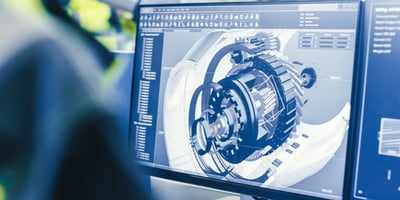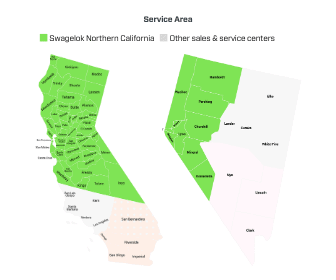Is Seal Support System Lubrication the Cause of Your Mechanical Seal Failure?
by Paul Lesnau, on 8/11/20 8:45 AM

Mechanical seals rarely fail because of some intrinsic structural problems with the seal itself. Yes, a seal may have eluded the manufacturer’s quality control process, been installed improperly, or become damaged by shaft vibration. More likely, however, seal failure is caused by some inadequacy in the seal support system’s inability to maintain the proper seal chamber environment.
In this blog, I’m focusing on one aspect that frequently leads to seal support system failure: inadequate lubrication. As a long-time consultant for California Bay area refineries, I’ve noted that this can happen whether or not there have been recent process changes. But that’s the best place to start when deciding what to do. Let me share how each of these scenarios play out and what you can do in each case.
Diagnosing Seal Support System Lubrication Failures
To begin, let’s be clear about what I mean by proper lubrication.
Lubrication: Delivering the process, barrier, buffer, or flush fluid at the required rate, pressure, and temperature to provide a seal chamber environment that maintains mechanical seal integrity |
When problems arise, they can stem from two general categories:
#1 No changes in process fluids or conditions, yet mechanical seals fail prematurely
#2 Changes in process fluids or conditions lead to premature seal failure
We’ll look at both and identify the problems that impeded proper seal support system lubrication.
When You Have No Changes In Process Fluid/ Conditions
In this case, I assume that there have been no changes in the fluids being pumped or overall process conditions. Any problems associated with suction and discharge piping or pump functions (motor, coupling, shaft, bearings, impeller, volute) have been ruled out. Here’s a brief summary of four seal support system lubrication problems that degrade mechanical seal reliability and the possible causes.
Problem #1
|
Lubrication Problem |
Elevated seal chamber distorts seal face parallelism |
|
Possible Causes |
|
|
Result |
Problem #2
|
Lubrication Problem |
Excessive or inadequate lubricant pressure |
|
Possible Causes |
|
|
Result |
Unwanted migration of process or barrier fluids across seal faces |
Problem #3
|
Lubrication Problem |
Particulates |
|
Possible Causes |
|
|
Result |
Seal faces degrade |
Problem #4
|
Lubrication Problem |
Rapid failure of seal in vertical pump |
|
Possible Causes |
|
|
Result |
Pump “runs dry” |
Obviously, there’s no single remedy for the variety of problems mentioned above. But here are a handful to consider.
⇒Increase cooling capacity by replacing coils or installing a larger heat exchanger
⇒Upgrade outdated seal support system components like tubing and filters
⇒Improve plant infrastructure and services
Keep in mind that any combination of the above may be required to provide adequate lubrication.
I’ve helped many reliability engineers in Bay Area petrochem plants navigate the complexities of diagnosing lubrication problems like these. I’ve often been surprised by how some seemingly perplexing lubrication problems are solved with the combination of a reliability engineer’s knowledge of the process infrastructure and my experience in seal support system lubrication design.
When You Do Have Changes In Process Fluid or Conditions
When mechanical seals fail as a result of changing process fluids or conditions, it’s time to reevaluate the lubricating efficiency of your current seal support system. Higher process fluid temperatures can distort seal faces. A change in processing temperatures brought on by heavier feedstock with greater sulfur content can also increase the likelihood of corrosion in aging piping.
Changes in process fluids or conditions often require seal support system lubrication modifications to provide the seal chamber environment that ensures seal reliability.
For example:
|
Process Need |
Modification |
|
⇨ Accommodate higher process fluid temperatures |
Replace API 21 (Cooled flush) with API 23 (Cooled flush recirculated through seal chamber) |
|
⇨ Better removal of particulates related to corrosion |
Upgrade to API Plan 22 (Cooled flush with strainer) or API Plan 41 (Cooled flush with cyclone separator) |
|
⇨ Provide a better level of leak protection against fugitive emissions |
Replace API Plan 72 (Buffer gas) with API Plan 74 (Barrier gas) to allow a small amount of nitrogen to leak into the process fluid |
A change in a seal support system may also require changes in barrier, buffer, or flush lubricants to more efficiently dissipate frictional heat transport from the mechanical seal to the heat exchanger. You have two general types of lubricants to choose from: water/ glycol mixtures and oil. Process temperature is usually the decisive factor. High temperatures favor oils, though there are pros and cons to each selection.
Pros and Cons of Water/ Glycol Lubricants
|
Pros |
Cons |
| + Nonflammable | - Low viscosity at high temperatures limits its lubricity |
| + Inexpensive, easy to handle and store | - Freezes at low temperatures |
| + Thermal conductivity approximately three times greater than oils | |
| + Mixed with various concentrations of glycol |
Pros and Cons of Oil Lubricants
|
Pros |
Cons |
| + Wide range of types and viscosities | - High viscosities can damage seal faces, particularly carbon face material |
| + May contain additives to improve corrosion protection or lubricant stability | - Residue build-up at higher thermal stress |
| + Applicable to a wide range of process temperatures | |
| + Fluid stability at elevated temperatures | |
| + Excellent lubrication of seal faces |
The specific water/ glycol ratios or types of oils can be tailored to the process conditions to maximize the seal support system lubrication. Your mechanical seal vendor and seal support system partner can provide the guidance to help you match the pumping process with the seal support system and lubrication to optimize seal reliability.
Seal Support System Lubrication Questions? Talk To Swagelok
Northern California petroleum plants with mechanical seals whose reliability is being compromised by inadequate seal support system lubrication should contact Swagelok. Our field engineers welcome the opportunity to meet at your facility, review your challenges, and propose solutions to address each of your specific needs. Fabrication facilities in Fremont make it easy for us to assemble, test, deliver, and provide ongoing technical support for your seal support systems.
To find out more about how Swagelok Northern California can help you rememdy problems related to inadequate seal support system lubrication by providing expert consultation and Assembly Services, Contact our team today by calling 510-933-6200.
 About Paul Lesnau | Sales Manager, Business Development Manager, and Field Engineer
About Paul Lesnau | Sales Manager, Business Development Manager, and Field Engineer
Paul holds a B.S. in Mechanical Engineering from North Dakota State University. Before joining Swagelok Northern California, he was the West Coast Regional Sales Manager for an organization based in Illinois involved in pneumatic and hydraulic applications where he supervised product distribution throughout the western United States, Canada, and Mexico. While in this role, he was able to help provide technical and application-specific expertise to customers and distribution to drive specifications.



/Digital%20montage%20(1).jpg?width=1920&name=Digital%20montage%20(1).jpg)

